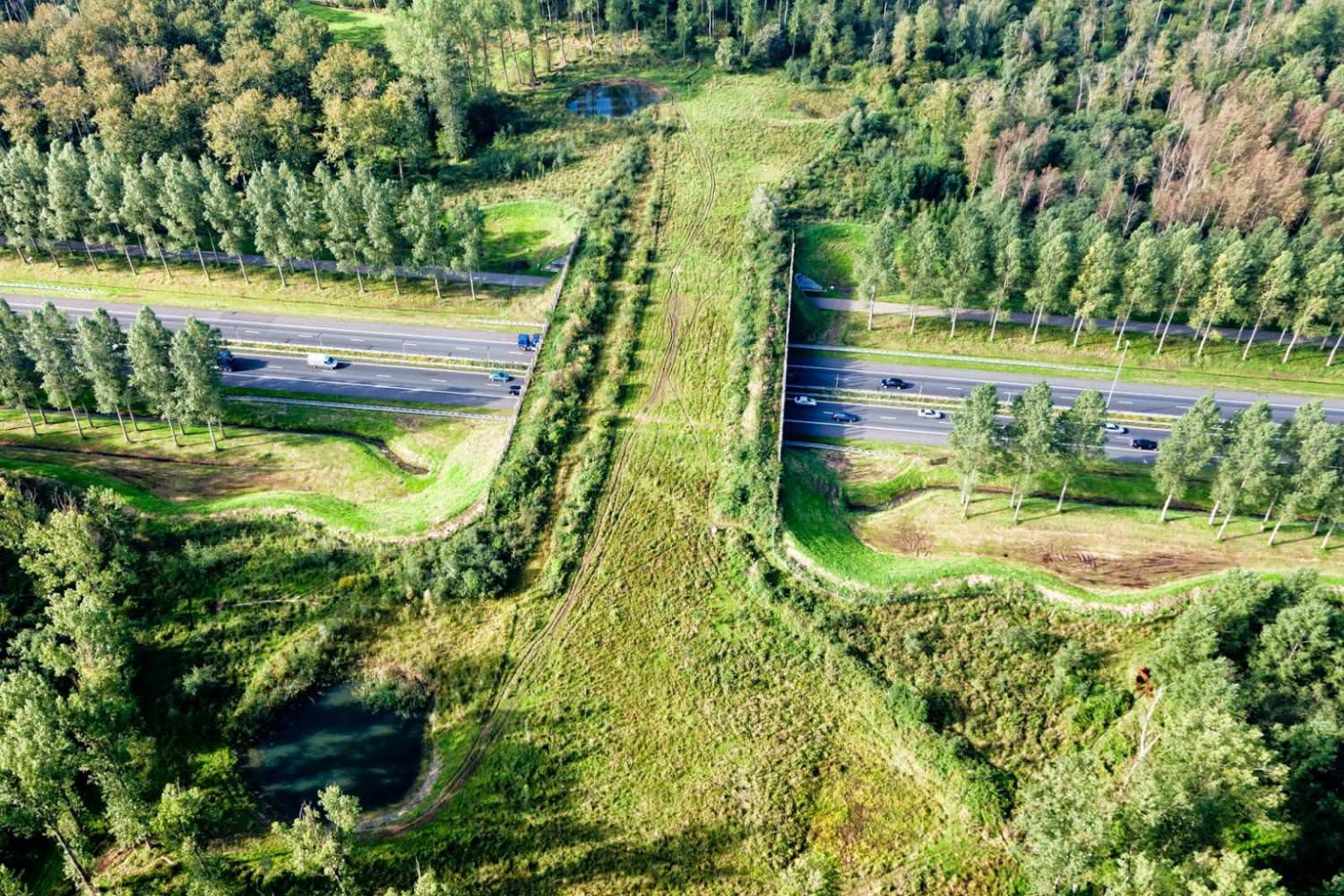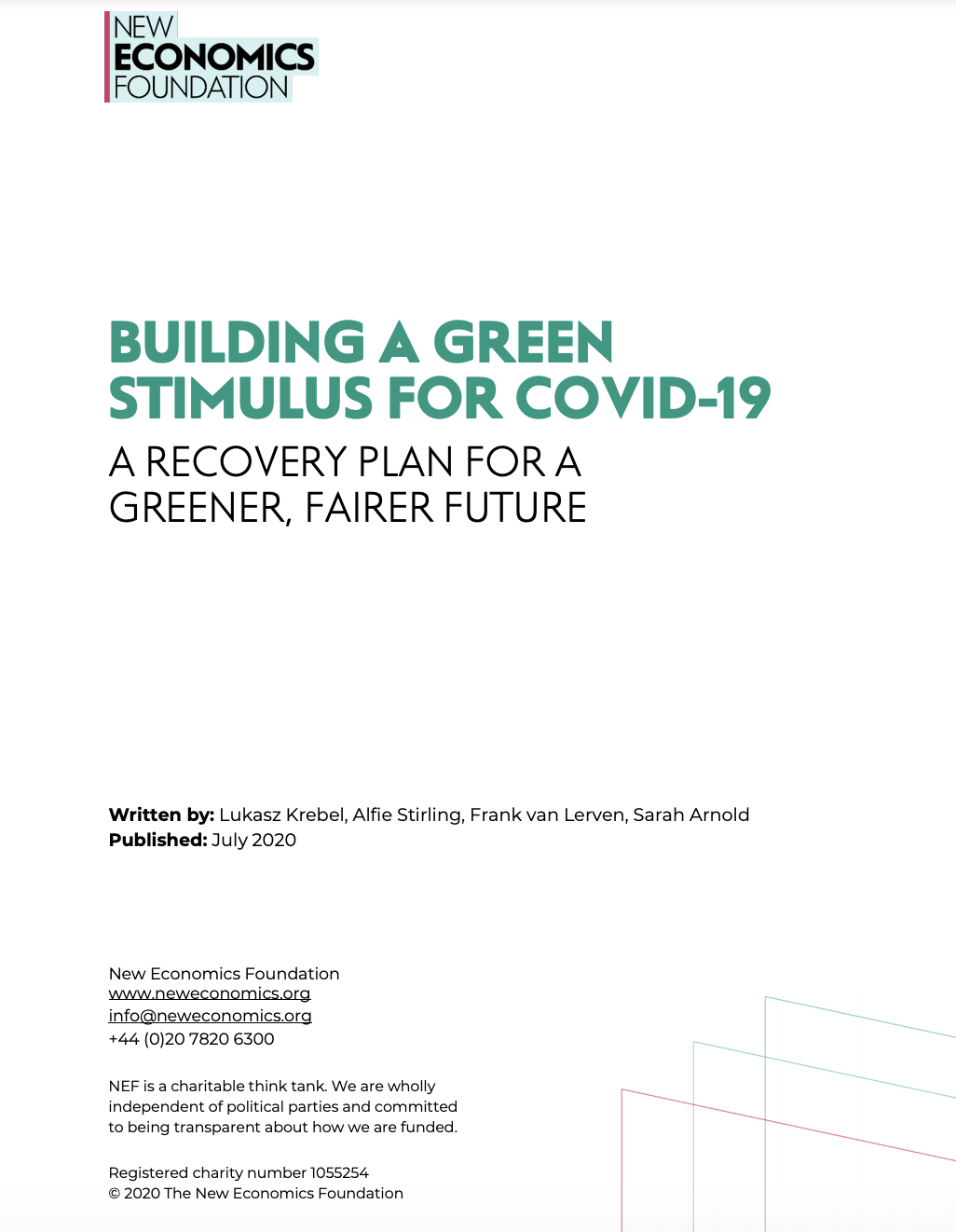Green recovery: what is it and how do we get there?
Posted on 18 Nov 2020 Categories: Blog, Climate crisis, Coronavirus
by Caroline Hartnell
The rhetoric across the political spectrum is that we need a green recovery. We are also seeing growing public outrage at increases in poverty. This was the background to a New Economics Foundation (NEF) briefing on 29 October with economists and other experts discussing how to build a just, green recovery from coronavirus.
We are in a severe recession, perhaps the worst for 300 years, said NEF economist Lukasz Krebel, and things will get worse. What we need is ‘a green stimulus, direct investment to create jobs to meet the climate emergency’. He acknowledged that we can’t save all jobs – ‘the economy wasn’t working for everyone or for the environment even before Covid’ – but £28 billion over 18 months could create 400,000 new green jobs.
What sort of jobs? In addition to the obvious – clean energy infrastructure, retrofitting homes, planting trees, carbon-free transport, etc – this must include jobs in social care and education, which are low-carbon as well as much needed (see earlier NEF briefing on a caring economy).

Dimitri Zenghelis, senior associate at Cambridge Institute for Sustainability Leadership, agreed that the recovery needs public investment to stimulate private investment, with the long-term aim to stimulate sustainable growth and create an inclusive, resilient, carbon-free economy. He emphasised the need to invest in physical, human and natural capital – the last is crucial as it’s in decline. ‘Natural’ investments, such as planting trees, natural flood management, and creating sustainable urban drainage systems and rewilding corridors, become ‘protectors and healers against a deteriorating natural environment’? The fact that they are ‘hands-on’ and labour-intensive, and the perception that they will be labour-intensive to manage, should not be seen as disadvantages: these are all low-carbon investments, and jobs are badly needed. We also need to invest in social capital, said Zenghelis, things like inclusivity and trust, which are in short supply because of prevailing inequality.
Why all this talk of growth?
Zenghelis maintains that the best way to reduce debt to GDP ratio is not austerity, not cutting debt, but boosting GDP. ‘A sustained period of growth will reduce the value of debt relative to GDP.’ Why this talk of growth, asked one audience member. Shouldn’t we be moving away from GDP? ‘If we continue to expand material consumption, we’re sunk.’
We can expand prosperity if we’re innovative in the way we use resources and invest in natural and social capital, said Zenghelis. We must use assets in a way that doesn’t undermine the sustainability of the planet, and we must distribute them fairly.
Gross human wellbeing would be a much better metric than GDP, it was suggested, as it avoids the ‘growth or no growth’ focus and looks instead at what kind of growth and for whom. Krebel agreed that Covid gives us a chance to move beyond GDP as a measure of economic success. GDP doesn’t reflect the fact that essential workers are underpaid and undervalued, nor cuts in health and social care. ‘We need other metrics.’
Can we afford to borrow for a green recovery?

The global pandemic has pushed public debt to historic heights. How can we argue that borrowing needs to continue, Krebel was asked. How can we afford to borrow more? The costs of borrowing are very low, he said, with people keen to invest in government bonds with no interest. Zenghelis agreed that there is ‘no magic ceiling on public debt’. In Japan it’s 200 per cent of GDP, he said. In the UK it’s now around 100 per cent. Spending £1 out of borrowed public money can stimulate £2 or £3 extra.
The question as they see it is more: can we afford not to borrow? In the short term, said Krebel, this would lead to massive misery and a huge spike in unemployment. ‘We need people to be supported to stay at home.’ In the long term, said Zenghelis, investments must be in an ‘inclusive, resilient, sustainable economy’, otherwise it will need to be replaced, and that would be a future public cost.
What are the barriers to delivering a green transition?
Sara Telahoun is senior sustainability consultant at Anthesis and her role is to support local authorities in developing net-zero strategies. Many local authorities have declared a climate emergency but they need to develop a strategy. This is something they are in many ways well placed to do, she said, as they have strong relationships with local communities, universities and business.
But certain things will need to be done, at all levels of government, if progress is to be made. Here Telahoun is in agreement with Jill Rutter, senior fellow at the Institute for Government.
- Develop a holistic approach: this is difficult for local authorities, says Telahoun, because of their silo-based, sectoral organisation. Rutter similarly points to a more general need for ‘beefed-up coordination’. Government needs to build climate change capacity, she says, with skilled people who can move around different government departments.
- Close the knowledge/capacity gap: local skills to deliver a just transition are lacking, says Telahoun. Rutter feels that local authorities ‘have lots of enthusiasm’ but the capacity they had in 2010 has been obliterated over the last decade. Skills training will be needed more generally, especially after Brexit, she says. Engineering and programme design capacity are particularly lacking in the civil service.
- Engage communities: policies will need to be developed with local communities, says Telahoun, as people must have an understanding of costs and benefits. Maintaining consent and engaging citizens is crucial, agrees Rutter. Government needs to make sure the transition is fair, otherwise public support will be lost. In her view, government needs to make much more extensive use of public consultation mechanisms like citizens’ assemblies. ‘Ministers are too nervous about what people will accept. The recent national citizens assembly on climate change shows this to be wrong.’
- Find the money: the biggest constraint for local authorities is finance. Providing adult social care takes up a very large proportion of their budget, leaving them limited capacity to do anything else. On the plus side, as we have seen, social care is an area where green jobs can be created. Unison say that 650,000 new jobs will be needed in 12 years just to meet existing and growing needs. While some local authorities are developing municipal/community enterprises, basically national government needs to make funds available to local authorities. As outlined above, economists don’t tend to see too many constraints on national government’s funding capacity.
We need to believe in the possibility of change
It has long been said that it’s easier to imagine the end of the world than a change in the economic system, said Andrew Simms of the Rapid Transition Alliance, speaking in a Compass webinar on a rapid transition just a day earlier, on 29 October, part of Compass’s #BuildBackBetterHOW series. The Rapid Transition Alliance consists of around 100 NGOs globally. They collect examples from around the world of societies demonstrating the ability to change rapidly in response to crises. These contribute to what he calls ‘evidence-based hope’. In his view the missing link preventing us from moving towards a carbon-free economy is not believing in the possibility of change.
For Simms, the biggest lesson from lockdown is that things can change. We have seen both rapid behaviour change and ‘societal engineering by the state’. As a society we can prioritise health and wellbeing. And the state can make the changes it wants to make. We have seen the potential for rapid industrial conversion, with companies converting to produce PPE, breathing aids, etc. The magic money tree can be used if the government wants.
So what now? We need mutuals, co-ops, etc that embody the new economy, said Simms. Rebuilding local communities can make big corporations redundant if we don’t want to buy from them any more. ‘We may be depressed by government inaction but it’s important to build and demonstrate the possibilities, and government may follow along.’
Green New Deal: a blueprint for green recovery

But we do need government action, and we need it now. Simms makes the point that it’s important not to let the lessons from lockdown focus on individuals. Behaviour change is not necessarily about individuals. The real lesson for climate is government ability to turn things around when it wants to.
The question is: does it want to? And why are so many mainstream economists talking about the standard solutions of ‘stimulus packages to restore growth’ with no mention of green recovery alternatives like the Green New Deal. Any policy package for rapid transition must look like a Green New Deal, says Simms.
The words ‘look like’ are clearly important. The Green New Deal is a fully-fledged package that addresses both the climate emergency and social injustice. A green recovery plan must also address the particular circumstances of the pandemic, as is explicitly done by NEF economists, who in July produced a paper called Building a Green Stimulus for Covid-19: A recovery plan for a greener, fairer future. The paper proposes ‘a framework for choosing projects based on the speed at which projects can begin, intensity of job creation, the extent to which jobs are spread across the country but can be intensified where they are most needed, and the extent to which projects are resilient to further tightening of social distancing, among other factors’. Based on this framework, they develop a detailed, illustrative investment package in priority green infrastructure projects between July 2020 and Dec 2021, concluding that retrofitting homes – installing insulation and heat pumps – should be the dominant component of the green stimulus package.
This doesn’t take us all the way in terms of addressing the climate emergency or social injustice, but it is surely the place to start now.
Want to keep up-to-date with more articles like this? Sign up to our newsletter.
Posted on 18 Nov 2020 Categories: Blog, Climate crisis, Coronavirus
